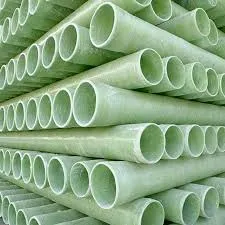
-
 Afrikaans
Afrikaans -
 Albanian
Albanian -
 Amharic
Amharic -
 Arabic
Arabic -
 Armenian
Armenian -
 Azerbaijani
Azerbaijani -
 Basque
Basque -
 Belarusian
Belarusian -
 Bengali
Bengali -
 Bosnian
Bosnian -
 Bulgarian
Bulgarian -
 Catalan
Catalan -
 Cebuano
Cebuano -
 China
China -
 China (Taiwan)
China (Taiwan) -
 Corsican
Corsican -
 Croatian
Croatian -
 Czech
Czech -
 Danish
Danish -
 Dutch
Dutch -
 English
English -
 Esperanto
Esperanto -
 Estonian
Estonian -
 Finnish
Finnish -
 French
French -
 Frisian
Frisian -
 Galician
Galician -
 Georgian
Georgian -
 German
German -
 Greek
Greek -
 Gujarati
Gujarati -
 Haitian Creole
Haitian Creole -
 hausa
hausa -
 hawaiian
hawaiian -
 Hebrew
Hebrew -
 Hindi
Hindi -
 Miao
Miao -
 Hungarian
Hungarian -
 Icelandic
Icelandic -
 igbo
igbo -
 Indonesian
Indonesian -
 irish
irish -
 Italian
Italian -
 Japanese
Japanese -
 Javanese
Javanese -
 Kannada
Kannada -
 kazakh
kazakh -
 Khmer
Khmer -
 Rwandese
Rwandese -
 Korean
Korean -
 Kurdish
Kurdish -
 Kyrgyz
Kyrgyz -
 Lao
Lao -
 Latin
Latin -
 Latvian
Latvian -
 Lithuanian
Lithuanian -
 Luxembourgish
Luxembourgish -
 Macedonian
Macedonian -
 Malgashi
Malgashi -
 Malay
Malay -
 Malayalam
Malayalam -
 Maltese
Maltese -
 Maori
Maori -
 Marathi
Marathi -
 Mongolian
Mongolian -
 Myanmar
Myanmar -
 Nepali
Nepali -
 Norwegian
Norwegian -
 Norwegian
Norwegian -
 Occitan
Occitan -
 Pashto
Pashto -
 Persian
Persian -
 Polish
Polish -
 Portuguese
Portuguese -
 Punjabi
Punjabi -
 Romanian
Romanian -
 Russian
Russian -
 Samoan
Samoan -
 Scottish Gaelic
Scottish Gaelic -
 Serbian
Serbian -
 Sesotho
Sesotho -
 Shona
Shona -
 Sindhi
Sindhi -
 Sinhala
Sinhala -
 Slovak
Slovak -
 Slovenian
Slovenian -
 Somali
Somali -
 Spanish
Spanish -
 Sundanese
Sundanese -
 Swahili
Swahili -
 Swedish
Swedish -
 Tagalog
Tagalog -
 Tajik
Tajik -
 Tamil
Tamil -
 Tatar
Tatar -
 Telugu
Telugu -
 Thai
Thai -
 Turkish
Turkish -
 Turkmen
Turkmen -
 Ukrainian
Ukrainian -
 Urdu
Urdu -
 Uighur
Uighur -
 Uzbek
Uzbek -
 Vietnamese
Vietnamese -
 Welsh
Welsh -
 Bantu
Bantu -
 Yiddish
Yiddish -
 Yoruba
Yoruba -
 Zulu
Zulu
grp clarifier
Understanding GRP Clarifiers An Essential Component in Water Treatment
In the field of water treatment, the effective removal of suspended solids and impurities is crucial for ensuring safe and clean water supply. One of the technologies significantly contributing to this goal is the GRP (Glass Reinforced Plastic) clarifier. This article delves into the function, advantages, applications, and considerations of using GRP clarifiers in various water treatment processes.
What is a GRP Clarifier?
A GRP clarifier is a type of settling tank designed to separate particles from liquids using gravity. Made from glass reinforced plastic, these clarifiers provide superior strength and durability while being lightweight and resistant to corrosion and chemicals. This makes them an ideal choice for water treatment applications where the durability of the material is essential.
Working Principle
The primary function of a clarifier is to allow small particles to settle out of the water as it flows through the tank. When water enters a GRP clarifier, its velocity decreases, allowing suspended solids to settle at the bottom. The settled sludge can then be periodically removed from the tank and processed further. The clarified water rises to the top, from where it can be collected and directed to further treatment processes or discharged as clean effluent.
Advantages of Using GRP Clarifiers
1. Corrosion Resistance Unlike traditional materials like steel and concrete, GRP clarifiers are highly resistant to corrosive substances, making them suitable for use in aggressive environments.
2. Lightweight Construction GRP structures are significantly lighter than their concrete or steel counterparts, which simplifies installation and reduces transportation costs. This characteristic also allows for more flexible designs and configurations.
3. Maintenance and Longevity The smooth surface of GRP clarifiers reduces the accumulation of sludge and fouling, minimizing maintenance efforts. Additionally, GRP has an extended lifespan compared to traditional materials, resulting in lower replacement costs over time.
4. Cost-Effectiveness Although the initial investment in GRP may be higher than other materials, the long-term savings derived from lower maintenance and operational costs make it a cost-effective choice.
Applications of GRP Clarifiers
grp clarifier

GRP clarifiers are versatile and can be used in various applications, including
- Municipal Wastewater Treatment These clarifiers are widely used in municipal sewage treatment plants, where they aid in separating solids and improving overall effluent quality.
- Industrial Wastewater Management Industries such as food processing, pharmaceuticals, and textiles generate wastewater containing high levels of suspended solids. GRP clarifiers effectively handle these challenges, ensuring compliance with environmental regulations.
- Stormwater Management GRP clarifiers play a crucial role in stormwater treatment systems, helping to reduce pollutants in runoff before it enters natural water bodies.
- Drinking Water Treatment In drinking water treatment facilities, GRP clarifiers are employed to remove turbidity and other contaminants, ensuring safe drinking water for communities.
Considerations when Using GRP Clarifiers
While GRP clarifiers offer numerous benefits, there are several factors to consider during their implementation
- Design and Sizing Proper engineering design and sizing are critical to ensure optimal performance. Factors such as flow rate, sedimentation rates, and site-specific conditions must be thoroughly evaluated.
- Temperature Sensitivity The performance of GRP materials can be influenced by temperature fluctuations; therefore, it is essential to assess the thermal conditions of the installation site.
- Chemical Compatibility Not all chemicals are compatible with GRP; thus, it’s vital to evaluate the specific chemical environment to avoid degradation of the material.
Conclusion
GRP clarifiers represent a significant advancement in water treatment technology, offering a robust, cost-effective, and efficient solution for removing suspended solids from water. Their versatility across various applications continues to make them a preferred choice for engineers and operators in the water treatment sector. As industries strive for better water management practices, the role of GRP clarifiers is set to expand, contributing to cleaner water and better environmental outcomes.









